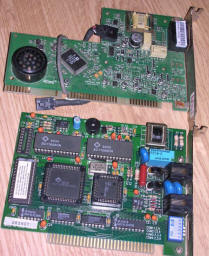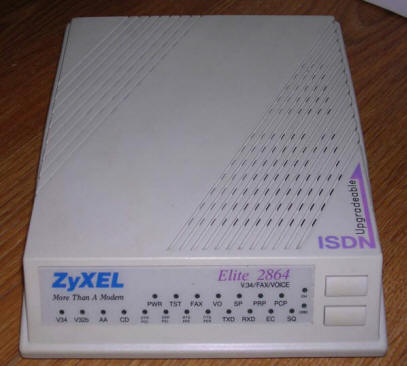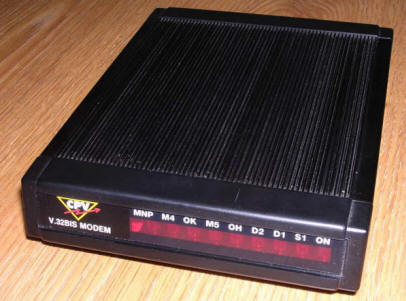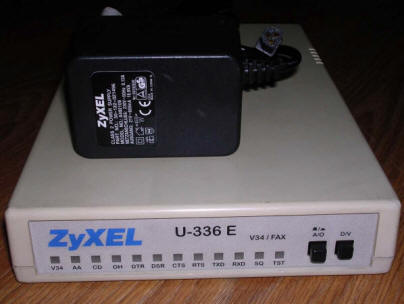Modems
Modem is a device which modulates and demodulates
signal. It is used to transfer data through analog lines like telephone
network (most frequently) or radio carrier. Although first modems were
introduced in 1960s, when throughput available by teletype started to be
insufficient, the popularity of modems for PCs became in late 1980s and
1990s when modems were used as a way to Internet. Quickly modems from
acoustic coupling became separate devices put between line and phone -
this required telecom certification but it finally became a fact. In
these cases phone lines were just a dumb pipes to transfer the Internet
- any service provided.
The speed of this connection was far from modern standards - from
14.4kbit/s (ca. 2kB/s), quickly serial port's 56kBit barrier has been
exceeded and some modems with special transfer methods could reach even
higher speeds (sometimes even ca. 40kB/s).
Technically, a modem (even internal) is seen by PC as a serial port or
is connected to physical serial port, and in most cases is a totally
separate "organism" with its own processor, memory and interface. PC
transmits commands to modem's serial port and modem responds the same
way. The most simple commands are standardised as
AT commands usually confused with "Hayes
commands", but most modems have own extensions to command sets
giving them additional capabilities.
Today we still have modems, but not in the form of
beeping box near PC. In industrial systems small modems are used to
communicate between devices. Embedded solutions usually have serial
port-based GPS or GSM modules still driven by AT commands. If you
have an external modem without power supply you should know that many
modems are powered right from AC transformer. This allows them to
generate needed negative voltages inside.
--> Tip of the moment: If you want your constantly beeping modem to shut
up, give it a ATM0 command.
| IBM 7857-017 | ||
| Manufactured by: IBM | ||
| Standard: V.32ter? (19.2kbps) | ||
| Sockets: Serial port | ||
| Information: Although this modem looks old, it's from 1994. It is one of the better modems these times, working with V32.bis standard (up to 19.2kbps) and advanced configuration. While most modems had LED indicators and configuration was made entirely from serial port, this one has a complete control panel with buttons and small LCD. Inside it is a system based on Intel 80C188 microprocessor. It has own power supply built-in and diagnostic tool on the rear. Analyzing its ROM, it can be seen that it has a sophisticated system responsible both for modem functions and for configuration using front panel, as well as for diagnostics. |
||
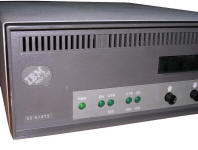
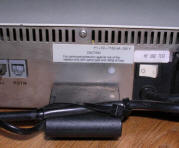
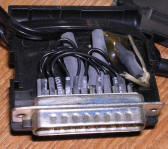
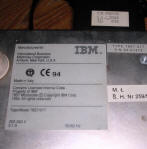
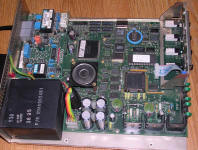
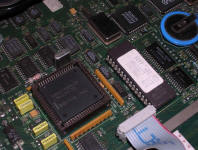
 |
||
| ZyXel Elite 2864 | ||
| Manufactured by: ZyXel | ||
| Standard: V.34bis (33.6kbps) | ||
| Sockets: Serial port, parallel port, speaker/mic jacks | ||
| Information: A popular modem in mid-1990s, frequently used to access networks and Internet using then-new method of connection - in Poland you could dial a number and just surf, with costs of telephone connection only. It can be expanded with additional buffer chips or ISDN connectivity module. Unusually, it has microphone and speaker jacks and can even digitize voice messages. This modem has some non-typical features like a parallel port which can be used both for PC connectivity and for printer for receiving faxes. The front panel contains diagnostic LEDs and two buttons so everything is in control. Power is +/-12V (1.5A +, 0.3A -12V)and +5V DC (1.5A). |
||
|
It was cheaper as most of its extended features were sold as
upgrades: Want bigger memory - buy chips and put them into
sockets. ISDN - there is upgrade for it. It was bought mostly
keeping possible future upgrades in mind, which never happened.
It is based on proprietary chips. ftp://ftp.zyxel.com/Elite_2864/ - Manuals, drivers Datasheet Driver package - which came with my unit. |
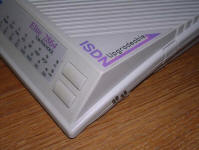
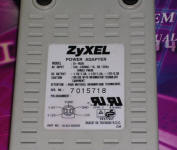 |
|
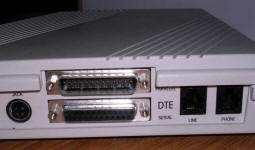
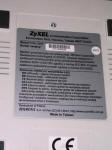

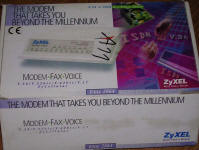
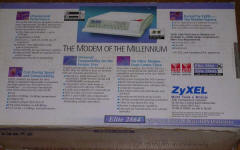
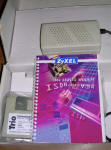 |
||
| CPV V.32bis | ||
| Manufactured by: ?Siemens? | ||
| Standard: V.32bis (14.4kbps) | ||
| Sockets: Serial port | ||
| Information: I don't have much information about this modem - it is probably German for German market. It has only a phone line connector, serial port and power supply jack (power unknown, probably AC). It is internally based on 73M2910 microcontroller with external ROM, and Rockwell RC144 modem-on-a-chip. For commands, see this link. 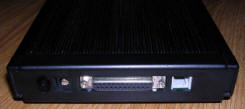 |
||
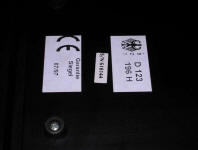
 |
||
| ZyXel U-336E | ||
| Manufactured by: ZyXel | ||
| Standard: V.90 (56kbps) | ||
| Sockets: Serial port | ||
| Information: This one is from late 1990s - contrary to earlier model, this one has a typical, non-fancy casing and higher capabilities in terms of speed. Features related to external fax printing and speaker/microphone are absent. It was frequently bought for phone Internet access as these times 56kbps was the fastest possible way through a phone line. As most ZyXel modems, it is based on proprietary chips. Power supply is 21V AC, 900mA, AC goes to two pins in horizontal line. ftp://ftp.zyxel.com/U-336E/ - Manuals, drivers |
||
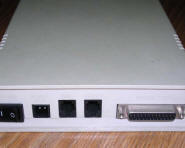
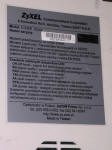
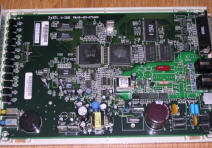
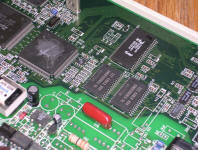 |
||





